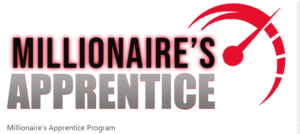How to Spot Fake ‘Get Rich Quick’ Schemes Before They Steal Your Time and Money. an important quick summary of the don'ts

“I’m tired of wasting my time and money on promises that never deliver. How can I spot these scams before they get me again?” If this resonates, you’re not alone. Many people, especially those looking to rebuild finances later in life, fall prey to slick marketing and empty guarantees. But you don’t have to anymore.
Understanding the Red Flags
The first step to avoiding scams is understanding their playbook. These schemes thrive on emotion—fear, desperation, and the allure of instant success. But with a keen eye, you can spot their tactics and sidestep their traps.
Promises of Instant Wealth
If it sounds too good to be true, it probably is. Claims like “Make $10,000 in a week!” or “No work required!” are designed to hook you emotionally. Real opportunities, like affiliate marketing, require effort and learning.
Tip: Look for programs that are transparent about the process and emphasize skill-building over quick wins.
High-Pressure Tactics
Scammers often push you to act immediately, creating a false sense of urgency. They’ll say, “Offer ends today!” or “Only a few spots left!” to rush your decision.
Tip: Legitimate programs allow time for research and decision-making. Take a step back and evaluate before committing.
Lack of Transparency
Be wary of companies that can’t clearly explain how their system works or avoid discussing potential risks. If the details are vague, it’s a red flag.
Tip: Trust programs that offer clear, straightforward explanations and are upfront about the effort required.
Exorbitant Upfront Fees
While some investment is normal, excessive upfront costs with little to no explanation should set off alarms. Scammers often profit before delivering any value—if they deliver at all.
Tip: Research reviews and testimonials to ensure you’re not throwing money into the void.
Breaking Free from the Cycle
Falling for scams can leave you feeling defeated, but it’s important to remember: every misstep is a lesson. Use these experiences to sharpen your instincts and rebuild confidence.
Trust Your Gut
If something feels off, trust your intuition. Often, our instincts detect red flags before our minds rationalize them away.
Seek Community Advice
Online forums, social media groups, and trusted advisors can offer invaluable insights. Sharing your experiences and learning from others can help you avoid common pitfalls.
Educate Yourself
The more you know, the harder it is for scammers to pull the wool over your eyes. Programs like Michael Cheney’s AI Millionaire are built on transparency and provide the tools to spot and avoid fake opportunities while building genuine skills.
Why Michael Cheney’s AI Millionaire Stands Out

Unlike get-rich-quick schemes, Michael Cheney’s AI Millionaire program emphasizes long-term success through proven strategies and AI-powered tools. It’s designed for those who want to learn, grow, and build a sustainable income stream—not chase empty promises.
With clear guidance, Cheney’s program equips you to:
- Identify legitimate affiliate marketing opportunities.
- Leverage AI to streamline tasks and maximize efficiency.
- Build trust with your audience through authenticity.
This isn’t about shortcuts; it’s about creating a roadmap to financial freedom, one step at a time.
Taking the First Step
Avoiding scams isn’t just about spotting red flags; it’s about choosing the right path. Programs like AI Millionaire provide a foundation of trust, transparency, and tangible results. By investing in your growth and focusing on genuine opportunities, you can move forward with confidence.

Your journey starts with a decision—to stop chasing quick fixes and start building something real. You’ve got the wisdom, the resilience, and now, the tools. So, take that first step today. The best chapters of your story are still ahead.
How to Spot Fake ‘Get Rich Quick’ Schemes by Peter Hanley
Over 60 and stuck? How to build a financial future
I would love to try affiliate marketing but what if it does not work